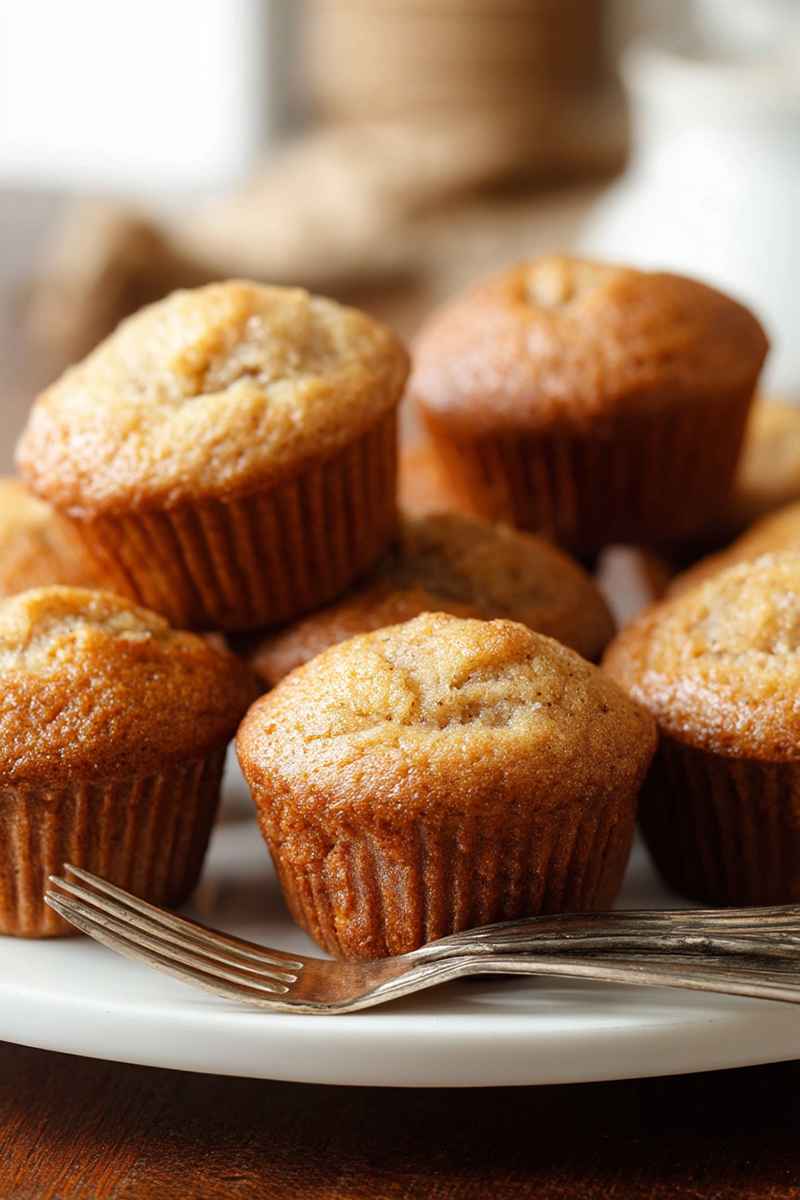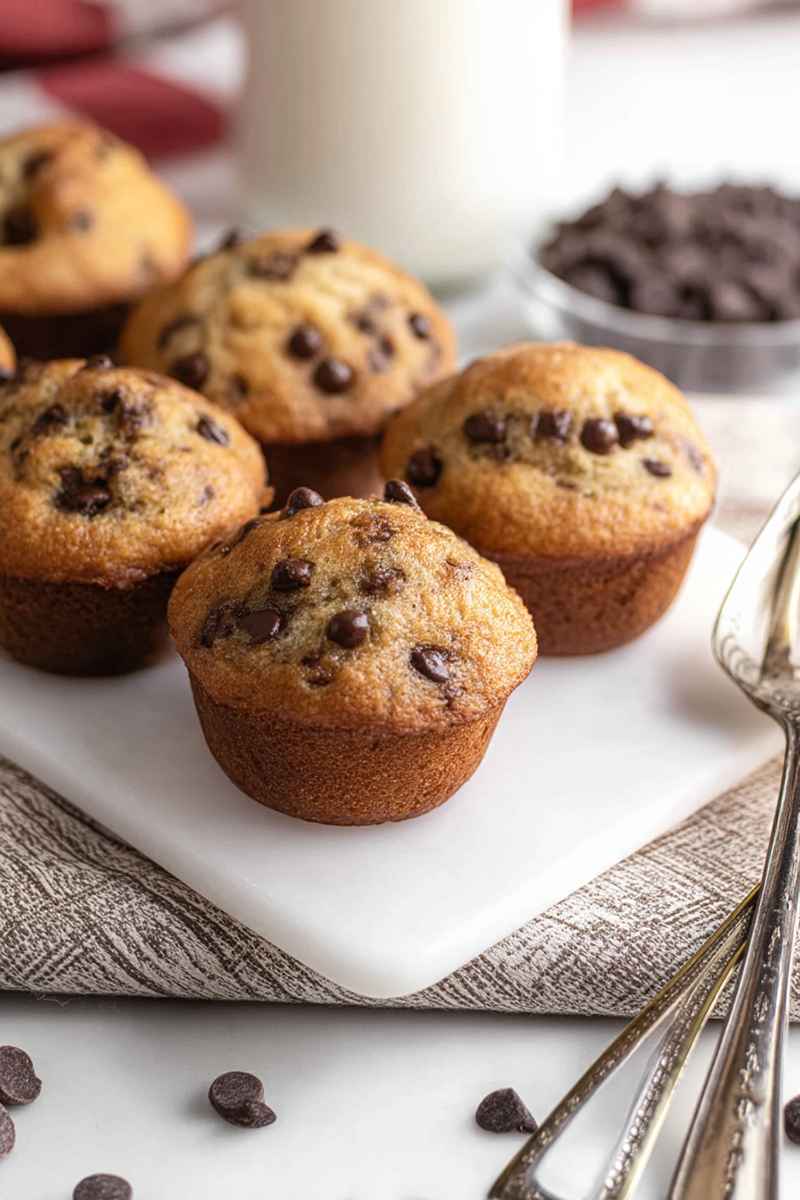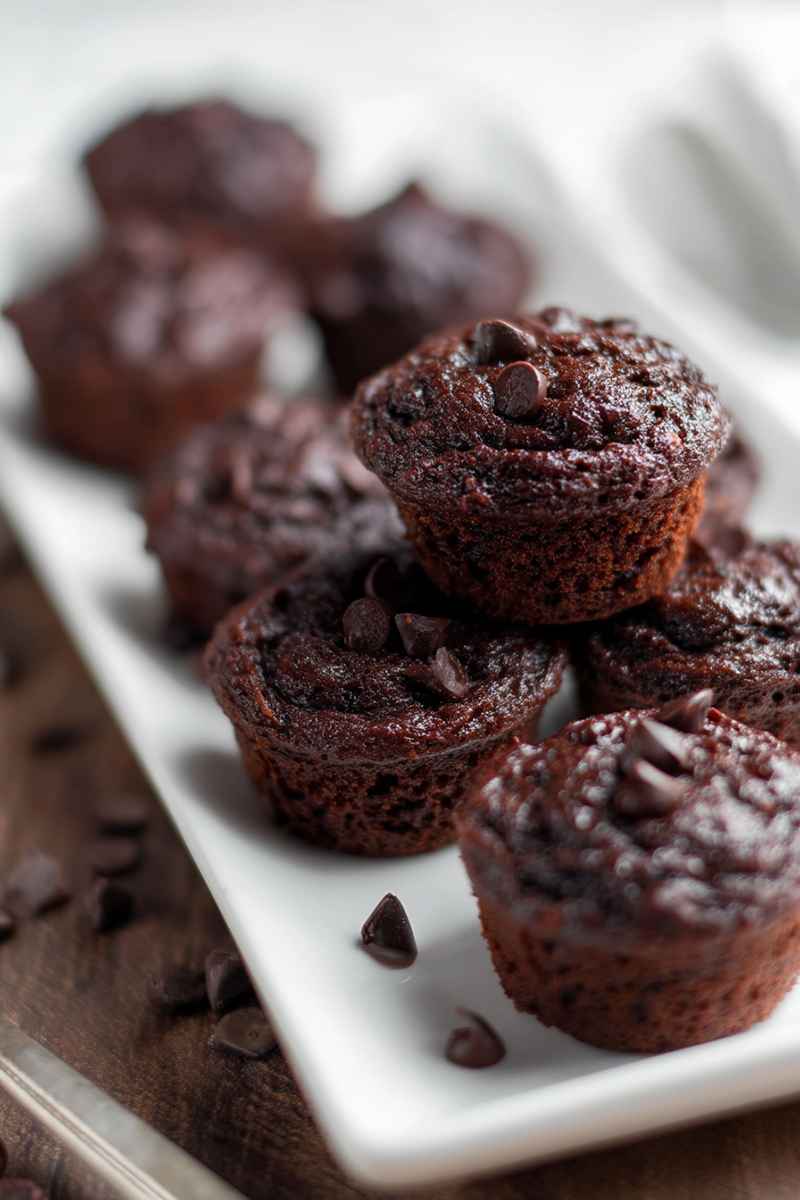These incredibly soft overnight sourdough English muffins are like little pillows of joy, featuring that perfect tender crumb and all those wonderful nooks and crannies we adore. I can tell you, making them at home with your active sourdough starter feels incredibly rewarding and is much simpler than you might imagine. They offer a lovely chewy texture and a gentle tangy flavor, making them ideal for toasting and slathering with butter or your favorite spread, perfect for a slow morning or a weekend brunch.
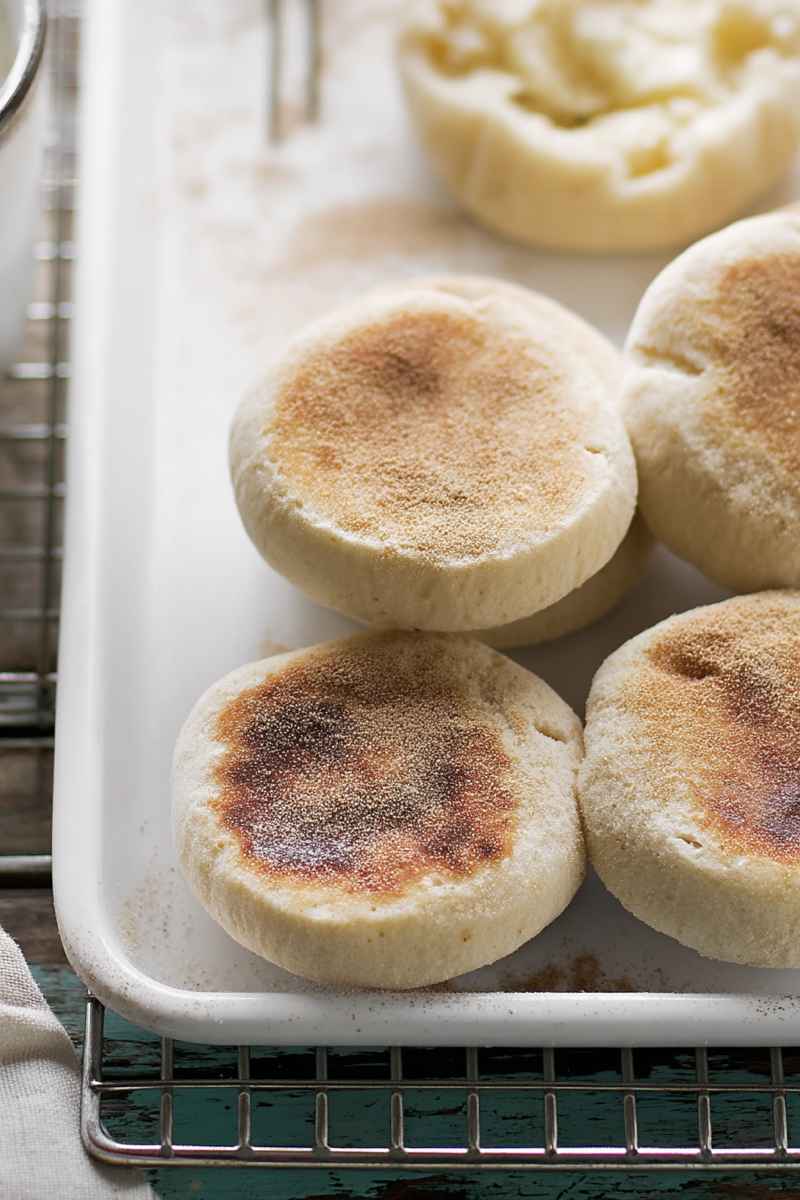
Sourdough English Muffins My Way
Is there really anything better than sinking your teeth into a warm, freshly toasted English muffin, letting hot melted butter pool into every single nook and cranny? Honestly, I don’t think so! I love them split open and topped with sweet strawberry jam, but they also make the absolute best base for a hearty breakfast sandwich packed with bacon, egg, and cheese. This recipe for sourdough English muffins stands out as one of the most adaptable sourdough bread recipes I’ve ever made.
Beyond their amazing taste and texture, let’s chat about how wonderful homemade sourdough English muffins are for you. They are entirely natural. By adding sourdough starter and allowing the dough to ferment slowly overnight, you make them even better. Plus, you completely avoid the long list of questionable ingredients often found in what you buy at the grocery store. You know those classic English muffins from Thomas? I grew up eating them and honestly, I still enjoy them sometimes. But seriously, take a peek at their ingredient list sometime, it’s quite eye-opening.
Whole Wheat Flour, Water, Farina, Wheat Gluten, Yeast, Salt, Calcium Propionate and Sorbic Acid (to Preserve Freshness), Sugar, Grain Vinegar, Sodium Stearoyl Lactylate, Natural Flavor (Contains Milk), Mono- and Diglycerides, Ethoxylated Mono- and Diglycerides, Soy Lecithin, Soy, Sucralose, Whey.
Why You Will Adore This Recipe
Here are a few reasons why this recipe for sourdough English muffins is sure to become a favorite in your kitchen.
- Easy, overnight dough preparation
- Completely natural ingredients
- Simple, clear directions for every step
- Absolutely wonderful taste and texture

Why Choose Sourdough
Just like my popular recipe for sourdough focaccia, this English muffin recipe relies on a bubbly, active sourdough starter to naturally leaven the dough. You don’t need any instant yeast here. Besides providing fantastic rising power, sourdough gives these muffins a wonderfully chewy texture and a unique, deep flavor profile that you just can’t get otherwise. And let’s not forget the magic of fermentation! With enough time, the right temperature, and careful preparation, the natural enzymes and beneficial bacteria in the sourdough work to make these muffins easier for your body to digest. It is a win win situation, offering both incredible flavor and potential health benefits.
Sourdough English Muffins Ingredients
Gathering your ingredients is the first step towards these delightful muffins. Here is what you will need.
- Milk
- Water
- Butter
- Active sourdough starter
- Sugar
- All purpose flour
- Salt
- Cornmeal or semolina flour, for dusting
Preparing the Ingredients
Warm milk, water and butter together
Mix sugar and sourdough starter
Combine wet and dry ingredients
Mix and rest for 30 minutes
(after 30 minute rest)
Work the dough into a ball
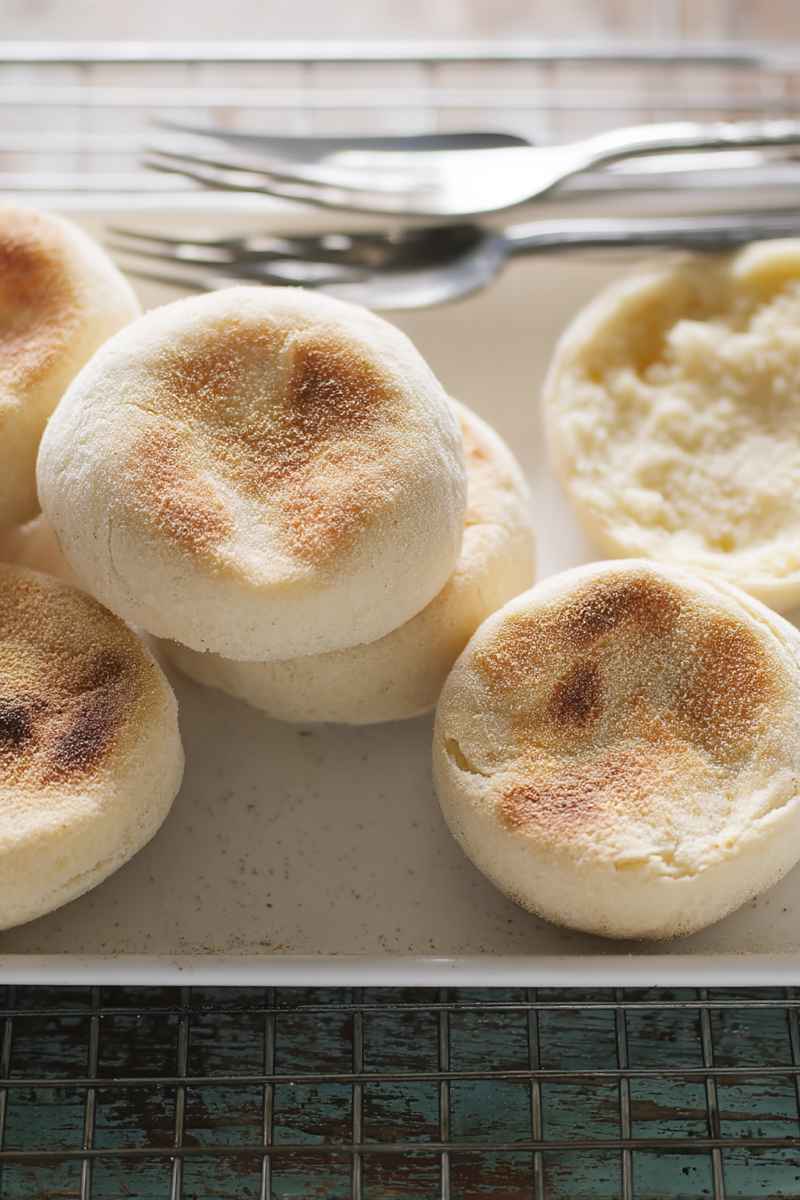
How To Make Sourdough English Muffins Step By Step
Making these beautiful English muffins is a process that requires a little time and patience, mostly for the dough to do its thing, but the active steps are quite manageable. Just follow along and you will have warm, homemade English muffins ready to enjoy.
Make the dough
- In a small saucepan, gently warm the milk, water, and butter together over low heat. You just want the butter to melt and the mixture to be warm, not hot. Let this liquid cool down a bit before you move to the next step.
- Get a large mixing bowl ready. Add your bubbly active sourdough starter and the sugar into the bowl. Pour the cooled warm milk mixture over the top of the starter and sugar. Whisk everything together briefly until they are combined.
- Now, add the all purpose flour and the fine sea salt to the bowl. Begin mixing everything together using a fork until you see a shaggy, rough dough starting to form. Finish bringing the dough together by hand, making sure all the dry flour is fully incorporated into the wet ingredients. The dough will feel quite sticky at this point.
- Cover the bowl containing the dough. Use a damp cloth draped over the top. Allow the dough to rest peacefully at room temperature for about 30 minutes.

Bulk Rise
After the initial 30 minute rest, uncover the dough. Gently work the dough inside the bowl, shaping it into a relatively smooth ball.
Cover the bowl using a piece of plastic wrap that has been lightly oiled. This helps ensure the dough does not stick to the wrap as it rises.
Let the dough rise at room temperature. Ideally, your room temperature should be around 70 degrees F (21 degrees C). The goal here is for the dough to double in size. This rising process typically takes about 8 to 10 hours or possibly even longer, depending quite a bit on how active your starter is and the actual temperature of your room. Once the dough has successfully doubled in size, place the covered bowl into the refrigerator. It will chill there overnight. This cold fermentation helps develop flavor and makes the dough easier to handle the next day.
Shape the Dough
The next morning, take the cold dough out of the refrigerator. Transfer it carefully onto a work surface that you have dusted with flour. Let the cold dough sit there and relax for about 10 minutes.
Prepare a baking sheet by lining it with parchment paper. Sprinkle this parchment paper generously with cornmeal or semolina flour. This is super important to prevent the English muffins from sticking as they rest.
Lightly flour your hands. Gently pat the dough out into a rectangular shape. Aim for it to be about 1/2 inch thick, which is roughly 1.25 centimeters.
Carefully cut out 10 to 12 rounds from your dough rectangle. You can easily use the rim of a drinking glass, a large jar, or a biscuit cutter that is between 3 and 5 inches wide. Gently place the cut dough rounds onto your prepared baking sheet. Sprinkle a little more cornmeal or semolina flour onto the tops of the rounds as well.
Second Rise
Now, cover the shaped English muffins sitting on the baking sheet. You can use a damp kitchen towel draped over them, or if you have a second rimmed baking sheet, you can simply invert it and place it over the first one to create a dome.
Allow the covered rounds to rest at room temperature for their second rise. You want them to become noticeably puffy. This second rise typically takes about 1 hour, or it might take a little longer, again depending on the warmth of your room. Sometimes I like to place the sheet pan on top of my oven while it preheats, as the gentle warmth can help.
Cook The English Muffins
Grab a large, non-stick skillet and place it on your stove top. Warm the skillet over low heat. It is really important that the heat is low and spreads evenly across the pan.
Do a test run first. Place just one English muffin round into the warm skillet. Cover the skillet with a lid.
Cook this single muffin on one side for 8 to 10 minutes. Make sure to check it about halfway through the cooking time to see how it is browning. If you notice it is browning too fast, simply reduce the heat slightly.
Once the first side is cooked, flip the dough round over carefully. Cover the skillet again and cook the second side for another 8 to 10 minutes.
After you have cooked your test muffin and found the right heat setting that works on your stove, cook the remaining English muffins in batches. They are finished cooking when they feel light when you lift them up and the sides gently spring back if you give them a soft press.
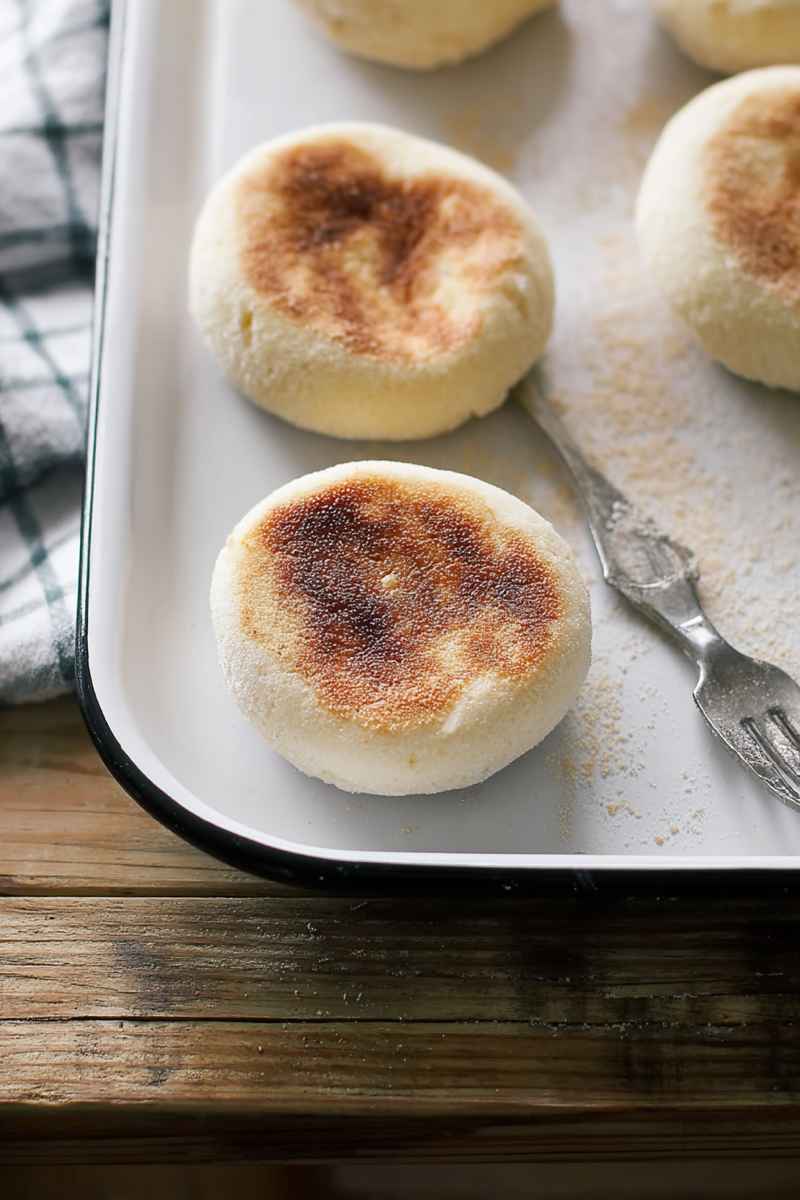
Good To Know Tips
Getting that perfect cook on your English muffins truly depends on using balanced, low heat. If your skillet is too hot, the outsides of the muffins will brown way too quickly. This leaves the center of the muffin undercooked and doughy inside. If you find this happening, do not worry. You can easily finish cooking them through in a low temperature oven. A temperature around 250 degrees F (130 degrees C) works well. Just bake them until they are cooked all the way through the middle.
It is highly recommended to cook just one muffin initially as a test. This test batch is incredibly helpful. It allows you to check your skillet temperature and make any necessary adjustments before you cook the rest of your precious dough rounds. Getting the heat just right ensures you end up with beautifully and evenly cooked, delicious English muffins every single time. You could even use some of the dough scraps from cutting out the rounds for your test batch if you really don’t want to risk one of your perfectly shaped muffins. I honestly do test batches for almost everything I cook that goes in a pan, whether it is fresh homemade pasta, gnocchi, ravioli, you name it. It makes a huge difference and is really helpful in getting things just right.
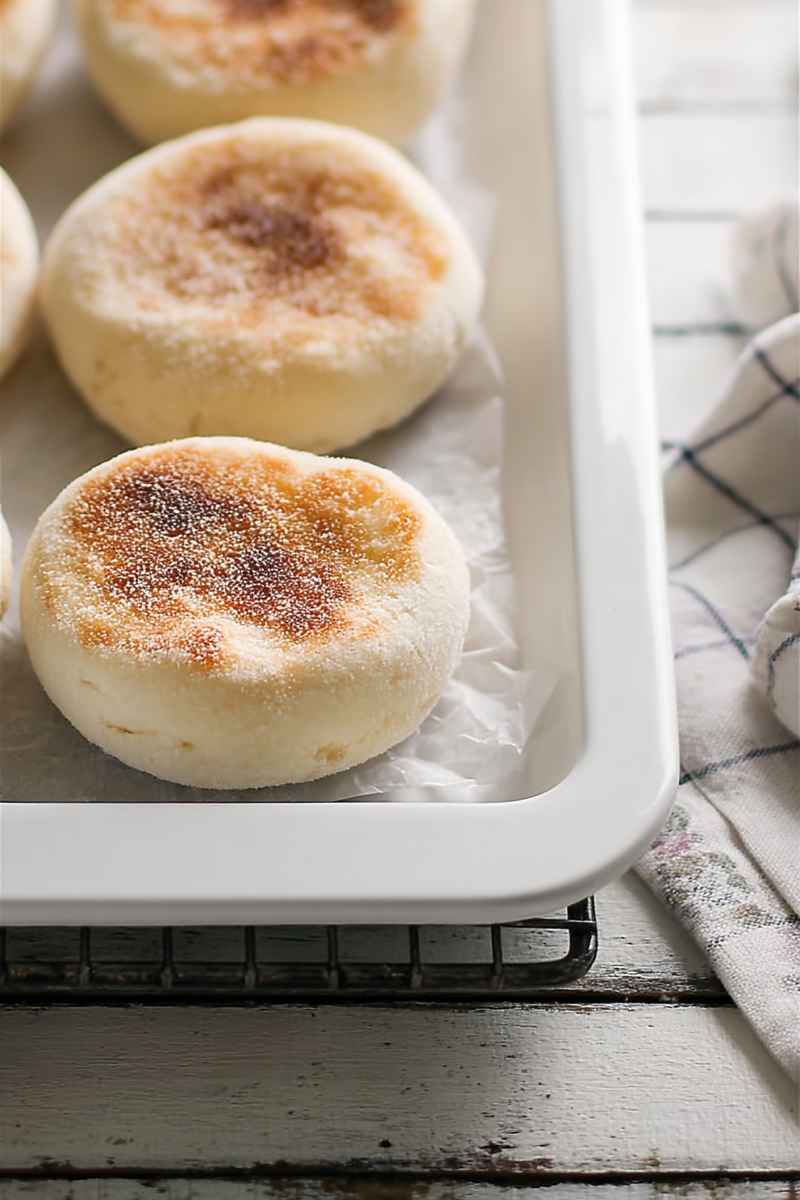
Frequently Asked Questions
This recipe is specifically developed for active sourdough starter to provide leavening and unique flavor.
Stored at room temperature, they are best within 2-3 days. You can also freeze them for longer storage.
Keep cooled English muffins in an airtight container or a resealable bag at room temperature. For freezing, place them in a freezer-safe bag.
This recipe calls for all purpose flour. Using 100 percent whole wheat would require significant adjustments to the liquid and rise times.
This usually means your skillet heat is too high. Reduce the heat and consider finishing them in a low oven if the insides are still raw.
You can use fine semolina flour instead, which provides a similar non-sticking surface.
Yes, the instructions provided are for mixing the dough entirely by hand.
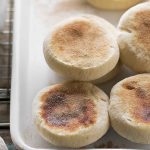
Easy Sourdough English Muffins (Perfect Nooks & Crannies!)
- Prep Time: 30 minutes
- Cook Time: 30 minutes
- Total Time: 1 hour
- Yield: 10-12
- Category: Muffin
- Method: Stove Top
Description
These Incredibly Soft Overnight Sourdough English Muffins are pillowy, tender discs with those perfect nooks and crannies, made simple with an overnight rise and active sourdough starter! You’ll love their chewy texture and tangy flavor, wonderful split and toasted with butter or your favorite spread!
Ingredients
For the English Muffins:
- 250 g (1 cup plus 1 teaspoon) milk, whole or 2 percent
- 120 g (½ cup) water
- 50 g (4 tablespoons) unsalted butter, cut into cubes
- 75 g (heaped ⅓ cup) active sourdough starter, bubbly and ready
- 25 g (2 tablespoons) sugar
- 500 g (4 cups plus 2 tablespoons) all purpose flour
- 10 g (1 ½ teaspoons) fine sea salt
- Cornmeal or semolina flour, for dusting the surface
Instructions
Prepare the Dough
- Warm the milk, water, and butter together in a small pot on the stove. Heat gently until the butter melts and the mixture is just warm, not hot. Allow this warm liquid to cool slightly before you add it to the other ingredients.
- Get a large mixing bowl. Put the active sourdough starter and the sugar into this bowl. Pour the cooled, warm milk mixture over the starter and sugar. Whisk these together briefly to combine everything.
- Add the all purpose flour and the fine sea salt to the bowl. Use a fork initially to mix everything until a shaggy dough begins to form. Finish bringing the dough together by hand, ensuring all the dry flour is worked into the wet ingredients.
- Cover the bowl containing the dough with a damp cloth. Let the dough rest at room temperature for about 30 minutes.
First Rise (Bulk Fermentation)
- After the 30 minute rest, uncover the dough. Work it gently within the bowl to form it into a relatively smooth ball.
- Lightly oil a piece of plastic wrap. Cover the bowl with the oiled plastic wrap. This helps prevent the dough from sticking as it rises.
- Let the dough rise at room temperature. Aim for a room temperature around 70 degrees F (21 degrees C). The dough needs to double in size. This will take about 8 to 10 hours, possibly longer depending on your starter and room temperature. Once the dough has doubled in size, place the covered bowl in the refrigerator to chill overnight.
Shape the Dough
- The next morning, take the cold dough out of the refrigerator. Transfer it onto a surface dusted with flour. Let the cold dough rest for about 10 minutes.
- Line a baking sheet with parchment paper. Sprinkle this paper generously with cornmeal or semolina flour to stop the English muffins from sticking.
- Lightly flour your hands. Gently pat the dough into a rectangular shape about 1/2 inch thick (approximately 1.25 centimeters).
- Cut out 10 to 12 rounds from the dough rectangle. You can use the rim of a drinking glass, a large jar, or a biscuit cutter that is 3 to 5 inches wide. Carefully place the cut dough rounds onto the prepared baking sheet. Sprinkle the tops of the rounds with more cornmeal.
Second Rise
- Cover the shaped English muffins on the baking sheet. You can use a damp kitchen towel or invert a second rimmed baking sheet over the first one.
- Let the covered rounds rest at room temperature. They should become noticeably puffy. This second rise usually takes about 1 hour or maybe longer, again depending on how warm your room is.
Cook the Muffins
- Get a large, non-stick skillet and place it on your stove. Warm the skillet over low heat. It’s important the heat is low and even.
- Do a test run with just one English muffin round first. Place one round into the warm skillet. Cover the skillet with a lid.
- Cook the single muffin on one side for 8 to 10 minutes. Check it halfway through the cooking time to see how it is browning. If it’s browning too fast, reduce the heat slightly.
- Flip the dough round over. Cover the skillet again and cook the second side for another 8 to 10 minutes.
- Once you’ve found the right heat setting with your test muffin, cook the remaining English muffins in batches. They are done when they feel light when you lift them and the sides spring back gently if you press them.
Notes
Heat Control: Achieving the perfect cook on English muffins depends on balanced, low heat. If your skillet is too hot, the outsides will brown too quickly, leaving the inside of the muffin undercooked.
Oven Finish: If you find your muffins are browning on the outside but are still raw inside, don’t worry. You can finish cooking them in a low temperature oven. A temperature around 250 degrees F (130 degrees C) works well until they are cooked all the way through.
Test Batch Advantage: It’s highly recommended to cook just one muffin first. This test batch lets you check your skillet temperature and adjust it before you cook the rest of your dough rounds. Getting the heat right ensures evenly cooked, delicious English muffins.
Nutrition
- Serving Size: 1 muffin
- Calories: 220
- Sugar: 3g
- Sodium: 300mg
- Fat: 5g
- Carbohydrates: 38g
- Fiber: 2g
- Protein: 7g
- Cholesterol: 13mg

